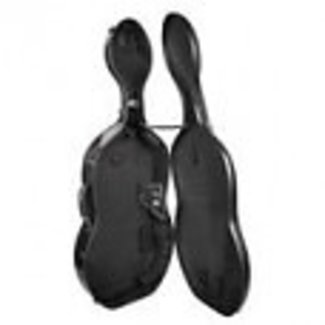All six Bach suites for solo cello are made up of six different parts, namely:
Experts believe that Bach intended and designed the works as a systematic cycle and not as standalone works. Bach has therefore provided the works with a clear structure. Compared to Bach's other suite collections, the cello suites are the most consistent in the sequence of movements. In order to form them into a symmetrical whole, and thus go beyond the traditional forms of music, Bach included two gallantries between the Sarabande and Gigue in each suite. The Sarabande is always the emotional center of the suites and can be seen as the wedge of the suite. The suites also climb in difficulty and emotional richness.
The Prelude of the third suite consists of an ABAC form, with A as a small movement that finally dissolves into an energetic arpeggio piece. In movement B, the thumb position is used for the first time in the six cello suites to play the demanding chords. Then there is a return to the A theme, and the end is a powerful and surprising movement of chords. The Allemande is the only part of the six where an upper measure is added in the form of three-sixteenth notes instead of one-sixteenth note as in the standard form. The second Bourrée is often written in D minor, although it is actually written in C minor. This is due to the frequent occurrence of the note A in the Bourrée.
The fourth suite is one of the most technically demanding parts of the suites, as E minor is an uncomfortable key to play on the cello. The piece therefore requires a lot of stretched left hand positions. The Prelude consists mainly of a difficult undulating movement in eighth notes, which leaves room for a cadenza for the return to the original theme. In the sweet Sarabande, the emphasis on the second beat - the main feature of this dance in three-four time - is hardly noticeable since a chord is played on almost every first beat, and not on the second beat.
In Anna Magdalena Bach's manuscript, the Prelude of the fifth suite stands for "Discordable" or it is a scordatura: the highest cello string, normally tuned to A, should be tuned down a whole step to G. Today, almost every edition of the suites in addition to the original tuning a version added for the normal tuning, so in CGDA. When playing in regular tuning, some chords need to be simplified, but on the other hand, some melodies become easier to play. The Prelude is written in an A-B form, and begins with a slow, emotional section that dwells in the low notes of the cello. This is followed by a fast and technically very difficult one-line fugue that passes into the powerful conclusion. The fifth suite is best known for the intimate Sarabande, the second piece of all six suites in which there is not a single whole chord, but another broken chord. The fifth suite is also especially special because of its Gigue in the French style, in contrast to the Italian style used in the other five suites. The Royal Library of Belgium in Brussels owns an autograph by Bach with an arrangement of this suite for lute (the fifth suite for lute, BWV 995, probably composed in Leipzig between 1727 and 1731) and dedicated to a certain Monsieur Schouster.
The sixth suite was written for a five-string instrument, probably for the violoncello piccolo, less likely for the viola pomposa or the viola da spalla, because the title page of Anna Magdalena's manuscript reads: the suites written for the violoncello. With for this suite the designation "A cinq cordes" or 'on five strings', with the notation of the five strings to be used in notes: CGDAE. This last mention is missing in the other sources. Cellists who want to play the suite on the "modern" four-string cello encounter great difficulties because of the high (thumb) positions for the high notes. Yet most recordings of the suite available today are played on the four-string cello. The sixth suite is written in a much freer form than the other five. For example, the suite contains more ornamental and reciting runs and virtuoso passages. It is the only suite written primarily in the tenor clef. This is not necessary with the other suites, since in these suites you do not have to play higher than G4.





